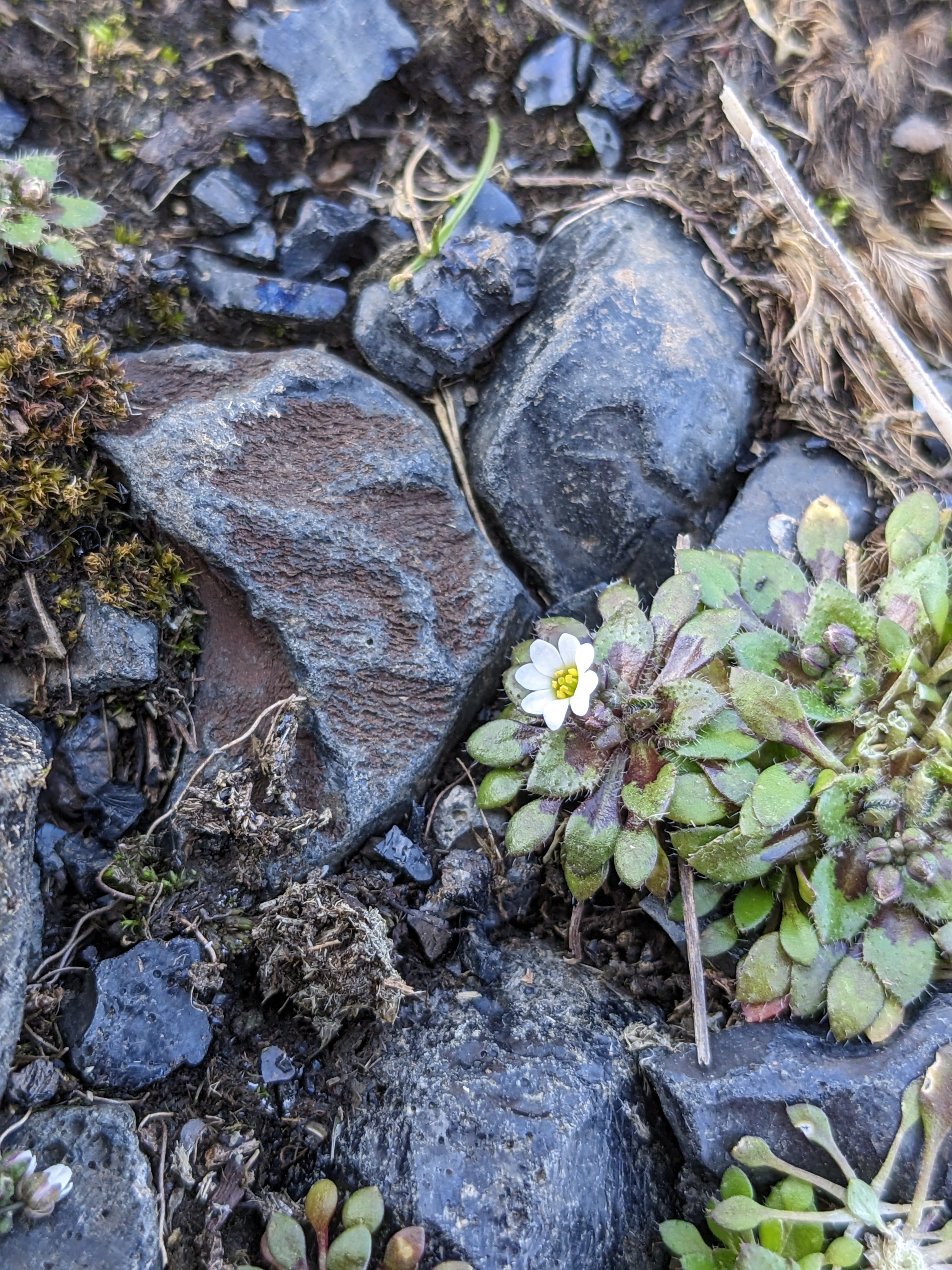
I picked the photograph carefully by typing “river” into my photos database and going through them carefully, waiting for the spark to happen. This was it; the Potwell Inn expressed in a single image. Incidentally my sister once told me off because, (she said), every time I wrote a lyrical piece I would throw a spanner in the works at the last moment, as if I couldn’t bear the thought of a happy ending. It was a reasonable criticism because, on reflection, that’s something I often do. Yesterday I read a single page of an essay concerning grass written by John Ruskin. I thought it was so gushing and overheated that I counted the adjectives on a single paperback sized page and there were 25. As I wrote a couple of days ago, my inner eye could scan the grasses on Mendip or – let’s say on the Lizard with interest, but alight with joy on a heap of mine spoil or bare serpentine rock. My defence would be that I’m far from being pessimistic by temperament; it’s experience!
The Potwell Inn is, and always was, my safe place. Since I read it as a set text at fourteen years old I’ve never lost the liberating sense of delight when Alfred Polly, the hero of HG Wells comic novel stumbled upon this idyllic pub with its own ferry after running away from his own bungled suicide which (long story) resulted in inadvertently burning his hated shop down and heroically rescuing an elderly woman from the blaze. From that moment all my ambitions centred upon finding my own Potwell Inn and my very own landlady. Someone – was it William Goldman? – once wrote that the structure of all great adventures is the Grail legend; the search for an answer to the question “what ails you?” – the one question in life that can never be answered through introspection.
The fact that sixty years later I chose the Potwell Inn as the name for my imaginary happy place, should be an awful warning to parents, teachers and economists about the power of stories. But there’s another thread that animates all great stories and that’s threat and release. Love is only truly love because it always ends in loss. Bereavement is the price we pay for flying, like Icarus, too close to the sun. If you look carefully at the sidebar you may notice the odd category “Uncle Jim” which I hardly ever use, but refers to the threat of annihilation by the large woman’s drunken brother. His threats are comical, but the menace is very real, and occasional confrontations (and dunkings in the river) only end with Uncle Jim’s accidental death wearing Polly’s jacket; relieving the unhappy Polly of his identity and allowing the new beginning he’d dreamed of.
So in one sense, the idea of the Potwell Inn as a safe place is only partially true. Which brings me back to the photograph. The canoeist in question is not paddling – as you might imagine – towards a magnificent sunset. The light floods across from the huge and mythically unlovely blocks of flats that were built on the old gasworks site across the river from us. Grossly overpriced, jerrybuilt monstrosities that resemble Russian bonded warehouses. The old gasworks site on what’s been named by an overheated copywriter as “The Western Riverside” was an ecological hotspot as well as providing a wide wildlife corridor towards a brief strip of countryside – awaiting ‘improvement’ from an ambitious architect with a couple of prisons under their belt. In my view that’s a crime that unites Gerard Manley Hopkins’ “Binsey Poplars” with John Masefield’s “cheap tin trays”. [sorry – this is a rant so no prisoners!]
But the threat element of my story goes further because the Potwell Inn of my imagination is also bordered by the river on which my canoeist paddles; but this real river is carrying more than its share of human effluent – the telltale signs are the ice floes of detergent foam that signify that someone – in a treatment plant somewhere close – has dumped another load of shit into the vicinity of my safe place.
I worry that my frequently elegiac rendering of the Potwell Inn distracts from the reality that Uncle Jim, who regenerates more often than Doctor Who, currently wears an expensive suit and loves to entertain Councillors and Planning officials at party conferences : – ( it’s all in the declarations of interest so no-one need bother denying it).
It’s too much – sometimes – this sense of threat. One of my producers once said that my best writing was in the lyrical style. Well yes – but the lyricism of mine and much current nature writing is in danger of becoming politically useful greenwashing. When was the last time I heard a cuckoo? In North Wales last week we were both startled with joy at the sound of a cuckoo which turned out to be no more lyrical than the dishwasher doing its rhythmic thing. The last real cuckoo was probably five years ago on our friends smallholding on the Brecon Beacons. How long will it be before we forget altogether?
On the other hand I’m having a bit of a fern binge at the moment and we found loads of Wall Rue on the wall outside the flat. How ironic that in my previous post I wrote about the way the plants and insects will outlive us when the catastrophe finally happens. Today I’m thinking how unutterably sad it will be if the only witnesses of the unfolding tragedy are dead?



































